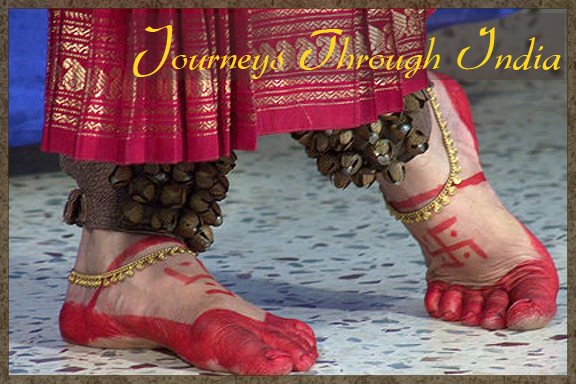Floating Palace, Aleppey
For 22 hours, we rest in the lap of luxury on a beautiful houseboat, traversing the canals and backwaters of Kerala. We rented a lovely, lovely boat, owned by the owners of the heritage home we stayed in last night. Even that was an experience, as our lodgings was in a very large, 2 room complex in an 180 year old home, complete with two courtyards, fountains, and a resident eagle. It has not been particularly restored, but one can imagine its use as a family compound, with many apartments and rooms surrounding the courtyards. Our rooms were upstairs, away from the rest of the house, and you entered it through the entrance off the street. To go to the rest of the compound, you went either through a courtyard or a second entrance. After climbing a lovely teak staircase, we went through double teak doors into a very, very spacious room. It was sparsely furnished with old red tile floors and shuttered windows every 8 feet or so all the way around the room. There was a second, smaller room in the back. I suspect this is the room in which business was conducted for the family. One can imagine the proprietor sitting behind a desk with clerks and helpers, with ample room for others to come. When a break was needed, he could retire to the back room. As I said, the rooms were adequately, but not beautifully restored. One can imagine what once had been.
In the late morning we left this lodging for our floating palace. All was clean and tidy with a lovely table set behind the driver’s chair and two lovely rooms with four poster beds and bathrooms behind. Upstairs there was a second story terrace, partly covered with a table and four chairs and partly open with comfortable pillors and matting. We had a driver, a guide, and a cook, were treated like royalty, and fed absolutely delicious meals. The upstairs terrace area was particularly nice, as it gave you a lot of privacy and independence – as well as the ability to take photographs of the village life without being seen! Though this is a pricy venture, I highly recommend indulging in a boat with the upstairs (partly covered), and even we, on our tight budget, would have loved to do this for two days.
Relaxing, tranquil, quiet, and stunningly beautiful. All day, we were surrounded by a fringe of village life with delightful little homes surrounded by coconut palms, banana trees, other fruit trees, and the occasional goat, chicken, and cow. They got their water directly from the canals, which was about 20 steps outside their front door. Behind their homes were acres and acres and acres of bright green rice paddies – hand harvested! Everything these villagers needed was within a hands throw away: fruit, grain, meat, eggs, dairy. Perhaps there was a vegetable patch as well, though I didn’t see it in the front of the homes. We saw women washing their clothes in the clear water and men, women, and children bathing (with clothes on). We passed churches, schools, temples, and heard the Mahabharata broadcast over the loudspeakers in one area, beautifully chanted in a melodious tone uniquely Indian. The temples are very modest, which may be why I hadn’t "seen" many. They are often made of wood and blend into the environment splendidly. One also sees the influence of China and Indonesia in some of the homes and temples, whose rooftops have that lovely curved roof above the main roof. This second roof is where the warm air rises in the house and leaves, which keeps the entire house cooler. A similar structure is often seen in desert homes in the Middle East. Later in the day, school children were walking home, happily dancing in between the trees and flowers, as all children do. Some were taking the local boat home – 8-10 children piled into a hand-built wooden canoe and poled down the canal to home. The canals are of various width. Because we were on a large boat, we stayed in the bigger canals, which was 2-3 hundred yards wide. Later in the afternoon, Eleanor and Matthew took a small canoe into the villages, using the narrow canals that are only about 10 feet wide. These canals bypass and intersect for hundreds of miles, full of life: animal, people, flowers, birds.
Can one have a high point of high points? Really, the experiences here are so varied that they are beyond compare. And why should one? Why is it that we always must say this is more or less than that? Perhaps one lesson to learn is to let things just be, in the fullness of what they are, instead of comparing them. I think the people here are better at this than us analytical Westerners. Both types of thinking are necessary, but it is good to be able to do both. Sometimes we do. Sometimes we think. Sometimes we just are. Sometimes we love. Body, mind, spirit, heart.
And, life really can be simple, as the people along the banks of the canals can attest. (It does help to have the perfect climate, where heat and clothing are not really necessities.)
Someone once said that India changes one. For me, I’m old enough, experienced enough, and had a sense of purpose and center that I can’t say it’s changing me, but it is deepening the love and understanding of people, of life, of simplicity, of gratitude, and of prayer, which is a great gift.
Thursday, January 22, 2009
Subscribe to:
Post Comments (Atom)


No comments:
Post a Comment